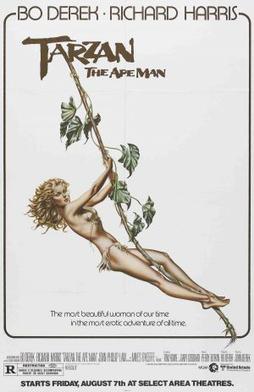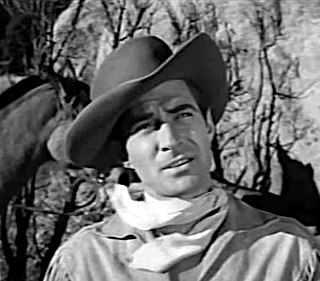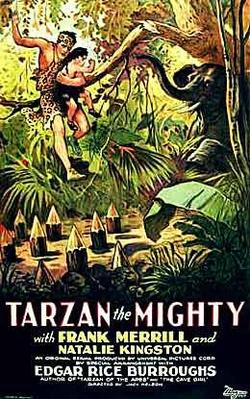
Parkour is an athletic training discipline or sport in which practitioners attempt to get from point A to point B in the fastest and most efficient way possible, without assisting equipment and often while performing feats of acrobatics. With roots in military obstacle course training and martial arts, parkour includes flipping, running, climbing, swinging, vaulting, jumping, plyometrics, rolling, and quadrupedal movement—whatever is suitable for a given situation. Parkour is an activity that can be practiced alone or with others, and is usually carried out in urban spaces, though it can be done anywhere. It involves seeing one's environment in a new way, and envisioning the potential for navigating it by movement around, across, through, over and under its features.

Buildering describes the act of climbing on the outside of buildings and other artificial structures. The word "buildering", sometimes misspelled bildering, combines the word building with the climbing term bouldering. If done without ropes or protection far off the ground, buildering is extremely dangerous. It is often practiced outside legal bounds, and is thus practiced mostly at night.

A stunt performer, often called a stuntman or stuntwoman and occasionally stuntperson or stunt-person, is a trained professional who performs daring acts, often as a career. Stunt performers usually appear in films or on television, as opposed to a daredevil, who performs for a live audience. When they take the place of another actor, they are known as stunt doubles.

Tarzan, the Ape Man is a 1981 American adventure film directed by John Derek and starring Bo Derek, Miles O'Keeffe, Richard Harris, and John Phillip Law. The screenplay by Tom Rowe and Gary Goddard is loosely based on the 1912 novel Tarzan of the Apes by Edgar Rice Burroughs, but from the point of view of Jane Parker.

Bruce Bennett was an American film and television actor who prior to his screen career was a highly successful college athlete in football and in both intercollegiate and international track-and-field competitions. In 1928 he won the silver medal for the shot put at the Olympic Games held in Amsterdam. Bennett's acting career spanned more than 40 years. He worked predominantly in films until the mid-1950s, when he began to work increasingly in American television series.

Tarzan the Ape Man is a 1932 pre-Code American action adventure film released by Metro-Goldwyn-Mayer featuring Edgar Rice Burroughs' famous jungle hero Tarzan and starring Johnny Weissmuller, Neil Hamilton, C. Aubrey Smith and Maureen O'Sullivan. It was Weissmuller's first of 12 Tarzan films. O'Sullivan played Jane in six features between 1932 and 1942. The film is loosely based on Burroughs' 1912 novel Tarzan of the Apes, with the dialogue written by Ivor Novello. The film was directed by W.S. Van Dyke. Metro-Goldwyn-Mayer released two remakes of Tarzan, the Ape Man in 1959 and in 1981, but each was a different adaptation of Rice Burroughs' novel. It is also the first appearance of Tarzan's famous yell.
Paul Sawtell was a Polish-born film score composer in the United States.
Gizmo! is a 1977 documentary film produced and directed by Howard Smith about improbable inventions, and uses old newsreel footage about these inventions. Early examples of parkour and buildering are also featured, including footage of an urban acrobat, John Ciampa, Frank "Cannonball" Richards and a stuntman, Arnim Dahl.

George of the Jungle is a 1997 American comedy film directed by Sam Weisman and based on Jay Ward and Bill Scott's 1967 American animated television series of the same name, which in turn is a spoof of the fictional character Tarzan, created by Edgar Rice Burroughs. Written by Dana Olsen and Audrey Wells, and starring Brendan Fraser, Leslie Mann, Thomas Haden Church, Holland Taylor, Richard Roundtree, and John Cleese. It tells the story of a young man raised by wild animals who falls for an heiress and contends with the heiress's spoiled fiancé. The film was produced by Walt Disney Pictures and was released in theatres throughout the United States and Canada on July 16, 1997. It was later aired on Disney Channel in the United States on December 5, 1998. The film received mixed reviews and grossed $174 million worldwide. A sequel, George of the Jungle 2, was released direct-to-video on October 21, 2003.

Tarzan's Greatest Adventure is a 1959 American Eastmancolor adventure film directed by John Guillermin, produced by Sy Weintraub and Harvey Hayutin, and written by Les Crutchfield, based on the character created by Edgar Rice Burroughs as the twenty-second film of the Tarzan film series that began with 1932's Tarzan the Ape Man. With a strong supporting cast that included Anthony Quayle and Sean Connery, and a focus on action and suspense, the film won critical praise as a Tarzan film that appealed to adults as well as children.

Jacques Joseph O'Mahoney, known professionally as Jock Mahoney, was an American actor and stuntman. He starred in two Action/Adventure television series, The Range Rider and Yancy Derringer. He played Tarzan in two feature films and was associated in various capacities with several other Tarzan productions. He was credited variously as Jacques O'Mahoney,Jock O'Mahoney, Jack Mahoney, and finally Jock Mahoney.

Ray "Crash" Corrigan was an American actor most famous for appearing in many B-Western movies. He also was a stuntman and frequently acted as silver screen gorillas using his own gorilla costumes.

Tarzan's Three Challenges is a 1963 British-American adventure film filmed in Metrocolor. The twenty-fifth film of the Tarzan film series that began with 1932's Tarzan the Ape Man, it is a follow-up to 1962's Tarzan Goes to India. The film was Jock Mahoney's second and final turn as the apeman, was produced by Sy Weintraub, written by Robert Day and Berne Giler, and directed by Robert Day. The film was released in June 1963, and was followed by Tarzan and the Valley of Gold in July 1966.

Tarzan, a fictional character created by Edgar Rice Burroughs, first appeared in the 1912 novel Tarzan of the Apes, and then in twenty-four sequels by Burroughs and numerous more by other authors. The character proved immensely popular and quickly made the jump to other media, first and most notably to comics and film.

Tarzan the Mighty is a 1928 American silent action film serial directed by Jack Nelson and Ray Taylor. It was nominally based on the collection Jungle Tales of Tarzan by Edgar Rice Burroughs. The film is now considered to be lost.

Tarzan the Fearless is a 12 chapter American Pre-Code film serial starring Buster Crabbe in his only appearance as Tarzan. It was also released as a 61-minute feature film which consisted of the first four chapters edited together, and which was intended to be followed on a weekly basis by the last eight chapters in individual episode format, but which was often exhibited instead as a stand-alone feature film. Actress Jacqueline Wells co-starred; she later changed her name to Julie Bishop. The serial was produced by Sol Lesser, written by Basil Dickey, George Plympton and Walter Anthony, and directed by Robert F. Hill. The film was released in both formats on August 11, 1933.
Hymie Lichtenstein, better known as Harry Monty, was a Polish-American actor, dwarf actor and stuntman, whose most notable role was as a Munchkin and a winged monkey in the Wizard of Oz.
Buddy's Theatre is an American animated short film, released and first shown in theaters on April 1, 1935. It is a Looney Tunes cartoon, featuring Buddy, the second star of the series. It was supervised by Ben Hardaway; and musical direction was by Norman Spencer.

Arnim Dahl was a German Stuntman.














